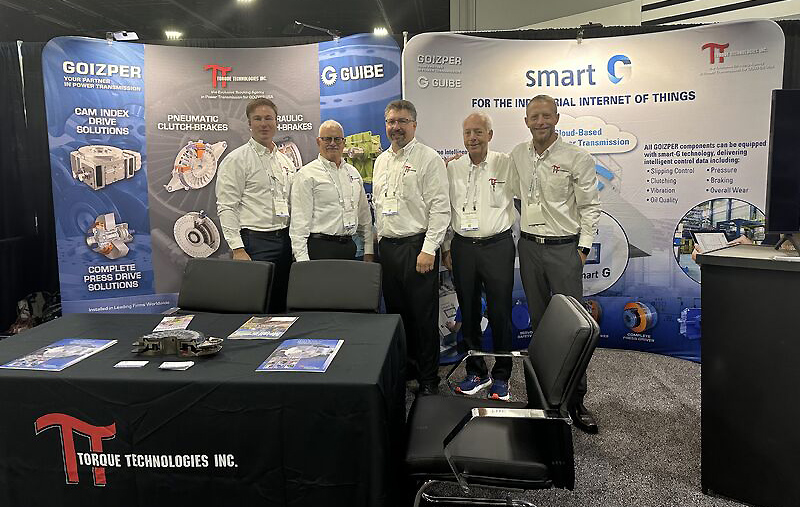TRADE SHOWS + EVENTS
Face-to-face networking still matters.
The power of having a strong, active digital presence has never been more important than now, but the power of face-to-face communication can make the difference between being on a customer’s ‘short list of solutions’ or not being considered at all.
In the not too distant past, the main purpose of a trade show was for buyers to source suppliers, new products and opportunities - while exhibitors would spend valuable time and money to ‘see and be seen’ among their clients, prospects and competitors.
Today, a buyer will spend much of their journey online: identifying problems and possible solutions, collecting supporting data and making key decisions, consulting with co-workers and colleagues, well before ever reaching out to a manufacturer.
Trade show success begins with strategy.
Before you invest in a trade show, ask yourself these key questions:
- Will this show help us meet our specific marketing objectives?
- Will our presence at the show provide us with a competitive advantage?
- Can we meet our objectives by ‘walking the floor’ or will a booth exhibit give us the most impact?
If participating in a show - whether exhibiting or attending - meets your organization’s goals, you can begin creating a plan and following a time-tested process to ensure your success.
Create a plan with SMART Goals.
The process of setting SMART Goals will help your marketing and sales teams make the best use of the finite amount of time and budget surrounding a trade show or industry event. Our team is experienced in leading diverse groups, often with competing goals, in SMART goal sessions designed to deliver results. If you’ve never followed the SMART process, read about it here.
The benefits of participating in trade shows:
Creating Brand Awareness
Participate in workshops and panel discussions during the event. These are great opportunities for people seeking to learn more about the industry to see you and your organization as thought leaders. Contact the show sponsors early and let them know of your interest in advancing industry awareness and knowledge.
Show - and show again.
Letting your visitors hold and test your product, interact with a screen simulation or view a video is one of the best ways to start a conversation and uncover their needs. Seldom does anyone want to be ‘sold’. Your visitors are actively seeking information, by putting the solution ‘in their hands’, you’re leveraging the true value of face-to-face marketing.
Product demonstration example:
Launching a New Product or Service
This is one of the most beneficial things you can do at a trade show, especially if you take advantage of all the promotion opportunities an in person show can provide. In addition to showcasing your new products and services within your booth, many shows offer a range of ‘extras’ designed to create additional awareness. A feature in the printed show daily, a mention in the show’s email newsletters or even a stand alone display of new and innovative products in a prominent section of the show are just a few of the ‘bonus’ opportunities available.
New product introduction example:
Generating Leads
Is THE main reason for exhibiting at a trade show, as long as you’ve prepared the right team, with the right attitude and training in place. Spend as much effort into preparing your team as you’ve already spent preparing for the show. Make sure your team understands the unique selling environment, are excited and knowledgeable about your offering and incentivized to do the best possible job.
Don’t overwhelm your visitors.
Chances are they’re already overwhelmed with the sheer volume of exhibits. Starting a conversation, by asking leading questions such as, “Are you finding any new or innovative products?”, “What are your goals for attending this show?” or “What attracted you to our booth?” can be the first step in a rewarding conversation.
Trade Show Marketing Tactics
Leverage your CRM and social media presence.
Create a plan to ensure your current customers and prospects in your database, as well as attendees (if available) will know WHY you’re going to be at the show and WHAT they can expect.
Segmenting your CRM
If you use a Customer Relationship Management tool, to make sure each audience knows what to expect. Purchasing agents may want to learn of a pre-show special or new financing options available at the show. Specifying engineers may want to see the ‘machines in action’ and learn of the latest advancements in advanced robotics… With the proper segmentation and messaging you’ll connect more effectively with your audience before they set foot in your booth.
Using Social Media
During a show to attracting visitors to your booth. Make sure you TAG the show’s LinkedIn page and use hashtags effectively, to keep your brand in front of your audience. Whether you’re exhibiting in a booth - or simply attending the show and walking the floor - using LinkedIn to create awareness has shown to be very effective.
Emails and Social Media
Your trade show presence is your opportunity for face to face communication with customers and prospects.
Pre-Show Emails and Social Media Posts
Emails and posts are essential, but don’t overdo it. Send two pre-show emails, at most, letting your audience know where you’ll be and what to expect. You may want to include a link to your calendar, to let your audience know you value their time by making it as easy as possible to set - and keep - an appointment. Social media sites, such as LInkedIn, are key to creating awareness of your presence at a show.
Post-Show Nurturing Emails and Social Media Posts
Post show nurturing is key, when combined with a knowledge of your customer’s buying journey and habits. Tailor your messaging based upon your interaction at a show. Quick barcode scans or ‘business cards in a fishbowl’ will need nurturing campaigns over time, using Marketing Automation if available. Product demos, sit-down meetings and requests for quotations are interactions you’ll want to plan for - and anticipate how to keep the conversation moving toward a successful outcome.
Trade Show Booth Design and Production
Your booth should reflect company branding — your company experience.
Exhibit Booth Design
The key to good design is the interaction between form and function. Creating visually stunning displays which showcase your products and brand, while not breaking the bank, can be accomplished with a little planning. The vast array of modular exhibit solutions: from tabletop or pull-up banners to 10-, 20- and 30-foot backdrops in various heights and widths - most of which can be packed into containers small enough for air or car travel, saving on valuable freight and time.
Think about your show plans for the year: are you sponsoring a hole at a golf tournament - use a pull-up banner and tabletop display. Use the same components with a lightweight fabric frame display for a 10- or 20-foot exhibit, while you feature your products on pedestals at the front of your display.
Trade shows are expensive. Make the most of your budgets by creating displays that are reusable, functional and flexible.
Examples:








